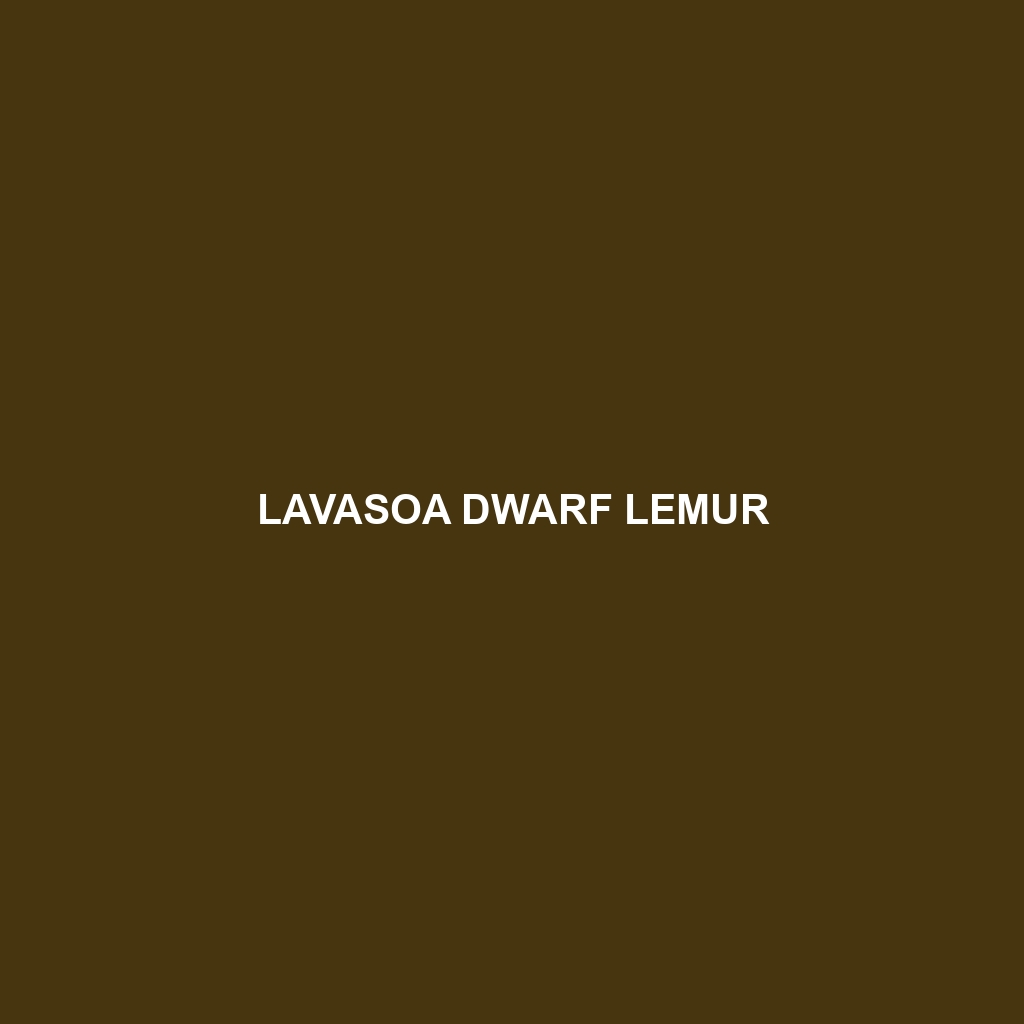Lavasoa Dwarf Lemur Description
Common Name: Lavasoa Dwarf Lemur
Scientific Name: Cheirogaleus lavasoa
Habitat
The Lavasoa Dwarf Lemur is primarily found in the remote rainforests of Madagascar, specifically in the Lavasoa Mountain Range. This area is characterized by its humid, tropical climate and dense vegetation, providing an ideal environment for these small primates. The Lavasoa Dwarf Lemur inhabits the lower and mid-levels of the forest, where they can easily navigate through the dense foliage.
Physical Characteristics
The Lavasoa Dwarf Lemur is a small primate, typically weighing between 0.6 to 1.2 kilograms. Its body length ranges from 20 to 25 centimeters, with a long, bushy tail that can be as long as its body, aiding in balance and movement through trees. The fur is soft and dense, predominantly light brown or gray with distinctive dark markings around the eyes, which enhances its visual appeal. Their large eyes are particularly adapted for nocturnal activity, allowing them to see well in low light conditions.
Behavior
These lemurs are primarily nocturnal, exhibiting a range of fascinating behaviors that capture the interest of observers and researchers alike. They are known for their arboreal lifestyle, spending most of their time in trees where they forage for food and interact socially in small groups. During the day, they typically rest in tree hollows or dense foliage to avoid predation. Their vocalizations include a variety of calls used for communication with other members of their group, especially during mating season.
Diet
Lavasoa Dwarf Lemurs have a diverse diet consisting mainly of fruits, flowers, and leaves, showcasing their herbivorous feeding habits. They exhibit frugivory, with a preference for ripe fruits that are abundant in their habitat. During the dry season, their diet shifts to include more leaves and flowers, utilizing the seasonal availability of food resources. They are also known to engage in nectar feeding, which indicates their role in pollination within their ecosystem.
Reproduction
The breeding season for the Lavasoa Dwarf Lemur generally occurs between September and December. Mating leads to a gestation period of approximately 60 to 70 days. Typically, females give birth to one or occasionally two offspring, which are cared for in a nest created in tree hollows. Offspring begin to leave the nest around two months of age but remain dependent on their mothers for several months, learning vital survival skills during this period.
Conservation Status
The Lavasoa Dwarf Lemur is currently classified as **Endangered** due to habitat loss from deforestation and illegal logging in Madagascar. Conservation efforts are essential to protect their habitat and ensure the survival of this unique species. Habitat preservation and restoration initiatives are critical to combat the ongoing threats posed by human activity.
Interesting Facts
One intriguing aspect of the Lavasoa Dwarf Lemur is its remarkable ability to adapt to its environment. They are known for their unique social structures and parental care behaviors, where both parents may be involved in raising their young. Additionally, they have a distinctive call that can be heard at night, making them a fascinating species to observe for wildlife enthusiasts and researchers alike.
Role in Ecosystem
The Lavasoa Dwarf Lemur plays a crucial role in its ecosystem as both a seed disperser and a pollinator. By consuming fruits and nectar, they aid in the regeneration of forest flora and contribute to the overall health of their habitat. This interplay within the ecosystem highlights the importance of preserving their populations and the biodiversity they support in the Malagasy forests.
